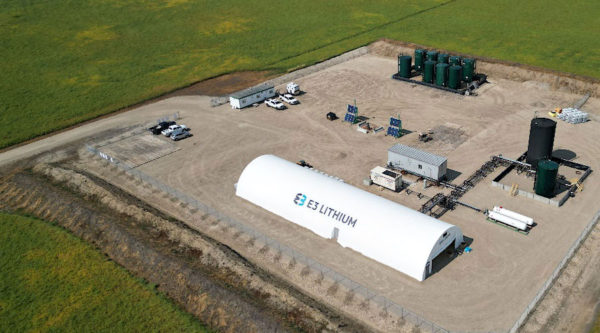Shares in E3 Lithium (TSXV: ETL) rose 8.7% Tuesday after E3 said it started operations at its Direct Lithium Extraction (DLE) plant in Alberta, the province’s first facility focused on testing the alternative method for drawing out lithium from brine projects.
The news comes almost one month after E3 said it had started commissioning the plant, located in south-central Alberta.
Considered by analysts at Goldman Sachs as a potential “game changing” technology, DLE could help companies nearly double lithium production from evaporation ponds, and has been compared to what shale did for the oil market.
E3’s operations will focus on testing pre-determined parameters thought to offer the most efficient results for lithium extraction from brines.
Each system will then run over a longer period to confirm performance and produce larger volumes of lithium concentrate for refining into marketable products, such as lithium hydroxide, the Calgary-based company said.
“This is a foundational moment for E3 Lithium, as demonstrating DLE at pilot scale will enable us to move forward in developing this lithium asset in Alberta towards commercialization,” President and CEO Chris Doornbos said in the statement.
E3 shares jumped 8.7% to a two-year high of $3.78 apiece after the announcement, valuing the company at $243.4 million. Its shares traded in a 52-week window of $1.74 and $4.04. The highest the stock has ever been was on Feb. 29, 2021, when it closed at $4.68 each.
Instead of concentrating lithium by evaporating brine in large pools, DLE pulls the brine directly into a processing plant where it undergoes a series of chemical processes to separate lithium before it is injected back underground.
The process produces a lithium concentrate in a matter of hours, instead of the 18-month average it currently takes evaporation ponds, and without the need to transport concentrates to a separate facility.
E3 Lithium’s plant is working with brine from the company’s own Clearwater project, which is expected to generate 20,000 tonnes of lithium hydroxide a year over a 20-year life, according to a 2020 preliminary economic assessment PEA.
Its after-tax net present value (at 8% discount) is pegged at about $820 million, with an internal rate of return of 27%.
E3 currently holds 16 million tonnes of lithium carbonate equivalent (LCE) in the measured and indicated categories, and 900,000 inferred tonnes of LCE, hosted in the Leduc Aquifer.
Clearwater forms part of this resource area, which has an average lithium concentration of 74 mg per litre.
In a research note on Wednesday, Red Cloud Securities mining analysts Alina Islam and David Talbot said that E3, as one of the first publicly listed companies in the country to establish proof of concept on petro brines, has a “first mover advantage” and is a leader among Western Canadian peers.
They said E3 is on their list of top lithium brine developers, and other companies they “believe could also be winners” include Lake Resources (ASX: LKE), which is expected to release a feasibility study by the end of the year, and Grounded Lithium (TSXV: GRD; US-OTC: GRDAF) which in July published a PEA with strong economics.
Lithium production from DLE is forecast to grow from about 54,000 tonnes today to 647,500 tonnes by 2032, according to Benchmark Mineral Intelligence.


Be the first to comment on "E3 Lithium shares hit two-year high after it opens Alberta’s first DLE pilot plant"